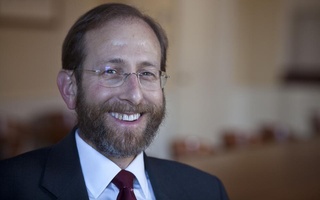Harvard University has continued to suffer losses on exotic financial instruments even as economic growth has slowly resumed, according to a recently released University financial report.
For the year ending June 30, 2010, the University lost $214 million through investments in derivatives, but those losses are significantly lower than the previous year when the University’s derivative portfolio lost $2.5 billion.
The University has also maintained investments in credit default swaps—originally designed as a form of insurance against loan defaults but often used to make a bet on the likelihood of default—that incurred a $73 million loss on paper in 2010. In 2009, paper losses on credit default swaps reached $452 million, according to the University’s financial report for fiscal year 2010.
Money managers have, however, significantly decreased Harvard’s exposure to the asset class.
To strengthen oversight over the University’s investments in derivatives, which have been cited as a cause for the breadth of the financial crisis, money managers have put in place tighter accounting standards for derivatives that seek to decrease risk associated with the investments.
To increase liquidity in the portfolio, money managers have also increased the University’s holdings of cash and U.S. Treasuries from $300 million in 2009 to $1 billion in 2010, according to the report. They added that they expected to increase the University’s liquid holdings for fiscal year 2011.
In previous years, the University’s operating funds were invested alongside the endowment, which resulted in a scramble for cash in the midst of the financial crisis.
In looking to the University’s future, the report sounded a note of caution, warning that investment returns are likely to remain “modest in comparison to the extraordinary returns” prior to 2009, that income from tuition is unlikely to increase given the University’s financial aid commitments, and that research funding from the federal government may decrease given the looming national debt.
The report also indicates that University money managers continue to contend with servicing debt payments after Harvard borrowed $480 million on the bond markets to meet cash obligations in 2009.
From fiscal year 2009 to 2010, the University’s debt load has increased by $300 million to $6.3 billion, with interest payments totaling $265 million. In 2009, interest payments reached $210 million.
To increase its fiscal flexibility, the University has placed an emphasis on “current use giving,” donations that can be directed toward any aspect of the budget. But, according to the report, those gifts decreased from between 2009 and 2010, dropping 15 percent from $291 million to $248 million.
Funding from the federal government, however, remained strong in 2010 and increased 15 percent in large part as a result of grants awarded to Harvard researchers as part of the 2009 stimulus bill. However, given political pressure to cut government spending, professors and administrators have expressed fears that funding from the federal government may decrease in the future.
—Staff writer Elias J. Groll can be reached at egroll@fas.harvard.edu.
Read more in News
Allston Civic Association Rejects Potential Pizza TenantRecommended Articles
-
University May Assume More DebtAfter finishing the fiscal year saddled with an unprecedented $6 billion in debt, Harvard may borrow even more money this year to sustain various capital projects across campus, the University’s chief financial officer said last week.
-
In Shanghai, Faust Expresses Optimism That Endowment Will Improve With Financial MarketsA year after Harvard’s endowment plummeted 27 percent—losing almost $11 billion—University President Drew G. Faust told reporters in Shanghai last week that she expects a better year for the University’s coffers.
-
A Full OverhaulFinancial regulation must specifically address capital requirements for banks, the tools to liquidate failed financial institutions, consumer protections, derivative trading, and the immense trading operations of many major investment banks.
-
Financial FolliesAs the debate continues, many Democrats and Republicans are trying to outdo each other to see who can seem “toughest” on reform, but in the process, they are failing to understand which regulations really need to be in place for the economy to function well.
-
 Stanford Professor Alan M. Garber ’76 Selected as Next Provost
Stanford Professor Alan M. Garber ’76 Selected as Next Provost -
Garber Selected As Next ProvostAlan M. Garber ’76, a Stanford professor of medicine and economics, has been selected as the next University Provost.













